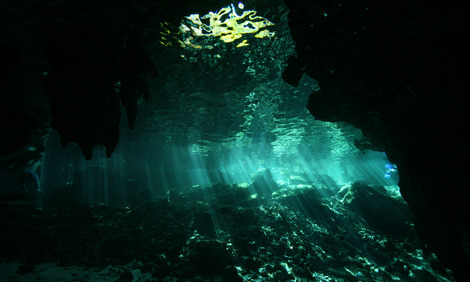Our enthusiasm for aquatic habitats
Most of us go on holiday. Some go to the Black Forest and some go to Hawaii - our tastes, time constraints and financial means are as varied as the dream destinations on this earth. But one thing unites us all: our enthusiasm for aquatic habitats! We can get as excited about a clear mountain stream full of trout in the Alps as we can about a clear water stream in South America.
I have been organising the JBL research expeditions for 18 years and have learned that the mood of the participants grows with the visibility under water. Of course we are also excited when we fish interesting, rare or beautiful fish out of a mud hole with a net. But real excitement usually only comes when we can put our heads under water with diving goggles and a snorkel - and see something!
The prime example - Pantanal
South America is very popular with a lot of aquarists. Clearwaters exist in almost every region, but finding these rarities is often difficult and time-consuming, as the major rivers - the Amazon, Rio Negro and Orinoco - are either black- or whitewater. Clear water is only found in occasional tributaries. But there is a huge marshland the size of Germany where clearwater is not the exception but the rule: the Pantanal. The clear water is created by the springs having to push their water through karst rock and sand before the spring pond and river are formed. This acts like a natural filter and produces water with incredible clarity! Visibilities over 20 metres are not uncommon! The clearwater rivers in Florida's west (Ginnie Springs, Crystal River), some of our alpine lakes or even the clear water lakes of New Zealand are the strongest competitors when it comes to the record of the clearest water on earth.
From freshwater rays to piranhas
For us aquarists, it is an absolute dream to snorkel in clear and warm waters (26-27 °C) and observe interesting aquarium fish from freshwater rays to piranhas. The Pantanal is now well developed and easy to reach. Unfortunately, the Brazilians have also discovered that paddling around in clear water with colourful fish is fun and some regions are so overrun with people, especially during their holiday periods, that there are more people than fish to be seen. We strongly advise you plan your visit outside the Brazilian holidays! There are countless local tour operators who will take you to the most beautiful spots and make a living out of it. It is also possible to do things on your own, but this is becoming increasingly rare. But that doesn't really matter. The main attraction are the clearwaters with their fish, invertebrates and plants.
To ensure that the majority of tourists survive the snorkelling trip, they are all equipped with life jackets. This of course will stop you from taking any good underwater pictures, so you’ll need to negotiate with the organiser by insisting you that you will not be one of their casualties even without a life jacket. Another very important tip: Try to be the very first in the water!!! All your followers will be walking around on the bottom in the river and then realise in amazement that the visibility may well be zero. The rivers have a certain current and if you always float nicely in front of the group in the river, you will have perfect conditions. At some point you come to an agreed exit point, walk or cycle back to the start and drift the same distance again. By then, the murky soup has also disappeared and you can be the first to catch the clear water again. This may all sound a bit touristy, but I promise you it's worth it. Floating in the rivers of the Pantanal is certainly one of the most beautiful experiences we can find on our planet!
Species diversity & plant variety
In the northern Pantanal in the region around Cuiaba/Nobres, the species diversity is much higher than in the southern Pantanal near Bonito, as many species from the Amazon basin can also be found there. Freshwater rays, armored catfish, many cichlid species, knifefish, various piranha species, tetras, sucker catfish, swamp eels and also invertebrates can be seen. On the other hand, the abundance of plants under water is very limited. I therefore recommend the southern Pantanal near Bonito to aquatic plant lovers. There, underwater, it looks as if an aquascaper has been there before you and has prepared everything for your visit. A connection of both destinations would be ideal, but it is not easy to manage even with domestic flights and is quite time-consuming.
As a fish fan, I prefer the northern Pantanal. As it is not yet so heavily frequented by tourists, I feel more comfortable there. You have more time to move around undisturbed and also to observe your favourites under water in peace. Don't forget your small water test case! The water values are quite interesting and not "Amazon-typical". pH-values around 7.3 and carbonate hardness levels around 10 °dKH are quite special.
Travel tips
Flights from Frankfurt to Brazil (Rio de Janeiro) start at around €600. The domestic flight on to Campo Grande (1 stop, 1-2 h) or Bela Vista costs about €110. Then continue by rental car or have a tour operator from Bonito pick you up at the airport in Campo Grande or Bela Vista. Simple to semi-luxurious hotels (€40-70) are not in short supply in Bonito. For the habitats of the northern Pantanal, you continue from Rio to Cuiaba (1 stop, approx. 5 h, €130). From there it is another 130 km to Nobres. There are various hotels available (€ 30-70).
Vaccinations: recommended for the Pantanal in Brazil: yellow fever, typhoid, hepatitis. However, an up-to-date vaccination recommendation from a tropical institute should always be obtained.
